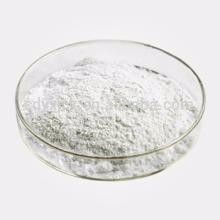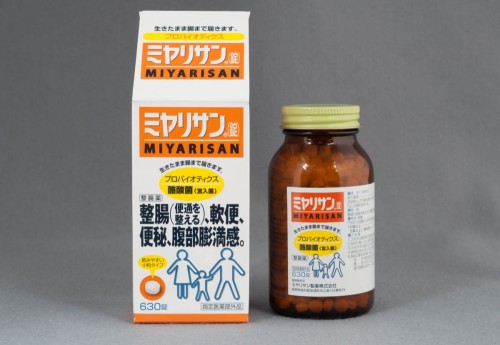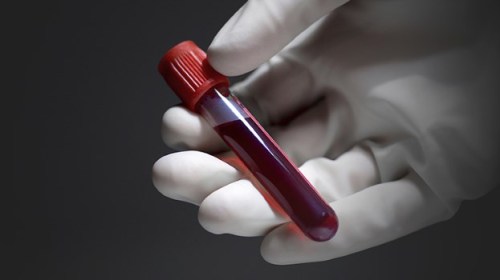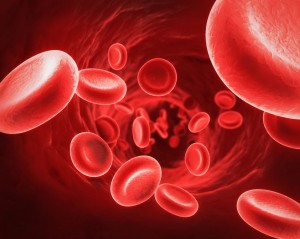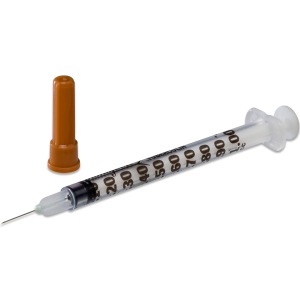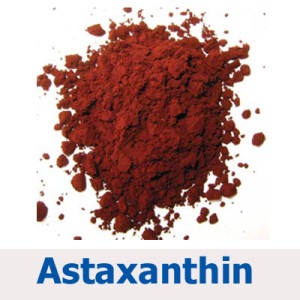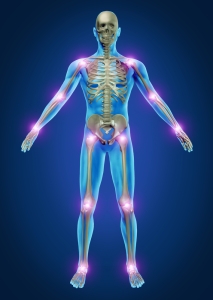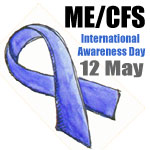The following list of potential ME/CFS treatments is divided into two sections. The top part describes treatments requiring a prescription while the lower section lists over-the-counter formulations that are readily available. I have written about the majority of the following treatments elsewhere on my blog, often in more detail. Clicking on the name of the treatment will open up a new window with this information. The below, alphabetically ordered two lists, detail a brief rationale as to why each treatment may be beneficial to ME/CFS patients. I also examine the safety profile and common dosages used for each treatment. As always, consult with your physician before commencing any treatment.
Prescription Treatments for ME/CFS
Azithromycin– Azithromycin is an antibiotic that has antiviral and immunomodulatory properties. It may be effective against a broad range of bacteria, many of which have been linked to ME/CFS. A study found that 58 out of 99 ME/CFS patients had a decrease in symptoms while taking Azithromycin. Dr. De Meirleir and Dr. Nicholson are both advocates of this antibiotic and have used it on ME/CFS patients with some success.
Azithromycin is generally fairly low in side effects although sometimes causing stomach upset. It is normally taken 3 times a day (away from food) at a dosage of 500mg on each occasion.
Dr. Brewer’s Protocol– This protocol involves patients taking either a nasal version of Amphotericin B or a compounded Nystatin that has to be atomised. Patients should also take a chelating PX. A pilot study by Dr. Brewer found that 56 out of 151 ME/CFS patients could not tolerate the Amphotericin B. 88 out of the remaining 94 patients (93.6%) had a reduction in symptoms. Approximately a third of these 88 CFS patients reached remission. Since this pilot study, Dr. Brewer has used a compounded and atomised Nystatin due to it being safer than the nasal Amphotericin B. The theory behind Dr. Brewer’s Protocol involves treating the sinus reservoirs of mycotoxins that may be causing ME/CFS symptoms.
Since replacing Amphotericin B with Nystatin, Dr. Brewer’s Protocol has become safer for patients, with followers of the protocol rarely reporting nasal side effects. Patients experiencing die-off symptoms range from 30-40% according to Dr. Brewer. The appropriate dosages of the compounded and atomised Nystatin and the chelating PX are provided by the compounding pharmacy.
Clonazepam– This treatment is one of the most polarising ME/CFS treatments in existence. Clonazepam may benefit patients due to reducing the overstimulation of the brain and central nervous system. It also has potential effects as a sleep aid, neuroprotector and energy enhancer. Several ME/CFS specialists are advocates of Clonazepam under the right circumstances, such as Dr. Cheney. There are also many online reports of patients benefiting from Clonazepam.
The dark-side of Clonazepam involves countless ME/CFS patients’ online anecdotes stating that this drug has been the worst treatment they have ever tried as it has caused long term side effects. A dosage around the 0.5mg- 1mg range is normally used on ME/CFS patients for sleep which is a lower amount than for other conditions. An even tinier dose is recommended by Dr. Cheney if the drug is used during the day with the motive of increasing the patient’s energy. Clonazepam shouldn’t be stopped suddenly and patients should gradually reduce the dose before ceasing treatment. The common side effects of Clonazepam include drowsiness and confusion. Some ME/CFS patients have reported other side effects such as a general worsening of their condition. As Clonazepam usage can be habit forming, patients often feel like they need to increase the dose to maintain efficacy which can be a dangerous process.
Dexedrine– Dexedrine may benefit ME/CFS patients due to alleviating cognitive impairment, reducing fatigue and increasing energy. A small study found 9 out of 10 ME/CFS patients had reduced fatigue after taking Dexedrine in comparison to 4 out of 10 patients in the placebo group. Dr. Teitelbaum is a supporter of this treatment, believing that it increases energy and blood pressure. Dr. Goldstein has written that 1/3rd of ME/CFS patients will improve as a result of taking stimulants and he has recommended amphetamine salts.
One of the risks of Dexedrine is that prolonged usage may lead to addiction. Dr. Goldstein has warned that if specific neurotransmitters are low in an ME/CFS patient, stimulants may increase ME/CFS symptoms. Dr. Rowe has recommended that ME/CFS patients begin with a 5mg dosage in the morning and if no improvement is noted, the dosage be increased to 10-15mg. Some patients may find that 5mg is too high for them to tolerate.
DHEA– DHEA is a hormone produced by the adrenal glands. A study found that the majority of the Japanese ME/CFS subjects had DHEA deficiency. Several studies have found the use of oral DHEA and intravenous vitamin C to be useful in treating ME/CFS. Another study found normal DHEA levels in ME/CFS patients but low blood levels of a hormone that causes the adrenal glands to release DHEA.
Dr. Cheney has found that DHEA is more effective in less severe cases of ME/CFS and that sometime symptoms may worsen if severely ill patients take this treatment. Dr. Myhill recommends Pregnenolone as an alternative to DHEA. Some doctors have experienced success in prescribing lower doses of DHEA such as doses less than 10mg. Another ME/CFS specialist recommends 50mg every second day. Palpitations, hair loss, acne and an upset stomach are some possible side effects.
Fludrocortisone– Fludrocortisone is a synthetically produced hormone. It may benefit ME/CFS patients with; hypotension, POTS, orthostatic intolerance or adrenal insufficiency. Its mechanism of action in ME/CFS patients could be due to; increasing blood volume, raising blood pressure and helping blood reach the bodies extremities. Three studies have been performed on ME/CFS patients taking Fludrocortisone with the ME/CFS patients’ level of improvement no better than the placebo group. According to Dr. Bell, Fludrocortisone is more likely to work on younger patients who are still somewhat active. Dr. Bell tries this treatment on almost all of his patients and says that it works well in approximately 25% of cases. If the drug doesn’t increase the ME/CFS patients’ activity levels by at least 50%, he stops the drug. Dr. Cheney believes that liquorice can have the same effect on patients as Fludrocortisone.
Many ME/CFS specialist recommend that Fludrocortisone dosages start at a very low amount such as a quarter of a 0.1mg tablet. Dr Rowe begins patients on a quarter of a tablet and if no side effects are noted, gradually increased this amount every 4-7 days to maximum of 2 tablets (0.2mg). Potassium and plenty of water should be used concurrently with this treatment. High blood pressure and depression are two possible side effects.
Gabapentin (Neurontin)– Gabapentin is a anticonvulsant drug that may benefit ME/CFS patients due to reducing pain, increasing energy and improving sleep. Its mechanism of action may be its ability as a calcium channel blocker to reduce the excretion of certain neurotransmitters that cause pain and stimulate the brain. Anecdotally, a number of ME/CFS patients have gained extra energy as a result of taking Gabapentin however in some of these cases the extra energy has worn off. Dr. Goldstein lists Gabapentin amongst his five most favoured treatments for ME/CFS. Dr. Teitelbaum uses Gabapentin for its sleep effects and Dr. Enlander uses it for stopping the ‘abnormal impulses’ in ME/CFS patients’ brains. Three studies have found Gabapentin to be beneficial to Fibromyalgia patients in the areas of sleep enhancement and pain reduction.
Gabapentin is considered to be fairly safe with a Cochrane review finding that serious adverse effects were no more common in the Gabapentin group than the placebo group. Dizziness, somnolence, peripheral oedema and gait disturbance are the most common side effects. Dosages should begin at low levels and only be increased if tolerated. ME/CFS specialists tend to start patients at 100mg-800mg and if no side effects occur, the dose is gradually increased up to 2400mg-5000mg. These doses are the total daily dosages and should be split up into three dosages across the day.
Heparin– Heparin is an anti-coagulant drug that may benefit ME/CFS patients who have hypercoagulation. A Heparin-ME/CFS study found all 9 patients gaining improvement with 5 noting significant improvement. Another paper refers to 60 ME/CFS/Fibromyalgia patients taking Heparin with an average improvement of 85%. Dr. Teitelbaum writes that Heparin helps about 50% of ME/CFS patients who haven’t benefited from any other treatment. It is imperative that ME/CFS patients have coagulation testing performed to determine Heparin suitability before commencing treatment.
Depending on what type of Heparin is used and what delivery method is chosen, the possible side effects of Heparin vary. If unfractionated Heparin is injected subcutaneously, regular blood tests to monitor treatment are a necessity. Heparin-induced thrombocytopenia is a potential side effect with this treatment although with Low Molecular Weight Heparin this is less likely to occur. A DEXA bone density test and liver and kidney function tests may be required before starting Heparin treatment. Sublingual Heparin and Low Molecular Weight Heparin are considered safer than unfractionated Heparin. Dr. Teitelbaum recommends those patients taking unfractionated Heparin start with 5000 unit injections twice a day and if blood tests are normal, the dose be gradually increased to a maximum of 8000 units twice a day.
Isoprinosine (Immunovir)– Isoprinosine may benefit ME/CFS patients due to its effects as an antiviral as well as its various immunomodulatory properties. A study found that 6 out of 10 ME/CFS patients benefited by taking Isoprinosine. In those patients who improved, their CD4+, T-cells and natural killer cells dramatically increased. Dr. Sharp believes Isoprinosine is one of the most helpful, safest and cost effective drugs for ME/CFS patients.
Isoprinosone may increase uric acid levels and therefore shouldn’t be used by those with gout. ME/CFS specialists generally pulse the dosage of Isoprinosine so patients don’t develop a tolerance to the drug.
Low Dose Naltrexone (LDN)– When used at low doses, Naltrexone causes the body to create more opioids which in turn may; relax the microglial cells, block pain, create endorphins and modulate the immune system. A small, pilot study on Fibromyalgia patients found that subjects experienced on average a 30% decrease in pain and fatigue while taking LDN. A second placebo controlled study on Fibromyalgia patients resulted in 32% of those taking LDN experiencing a significant reduction in pain as well as either a significant reduction in sleep problems or significant reduction in fatigue. Dr. Bihari reports that approximately 50% of ME/CFS patients are helped by LDN. Stories litter the internet of ME/CFS patients benefiting from this treatment.
LDN is considered one of the safest treatments for ME/CFS with few patients experiencing side effects. The most common side effect is sleep disturbance. The dosage used is normally in the 1.5mg-4.5mg range. LDN is generally taken at night before falling asleep.
Magnesium Injections– A study found low red blood cell magnesium levels in ME/CFS patients. After intramuscular magnesium sulphate injections, 12 out of the 15 ME/CFS patients improved compared to 3 out 17 patients receiving the placebo improving. A study determined that despite normal magnesium blood levels, Fibromyalgia patients had low intracellular levels of magnesium. Dr. Myhill has found approximately 70% of her ME/CFS patients improving after receiving magnesium injections.
Magnesium injections can cause temporary pain at the injection sight. High doses may cause diarrhea. Intramuscular injections are generally given once or twice a week.
Melatonin– Melatonin is a hormone whose primary role as an ME/CFS treatment is to aid sleep. One study found that it improved ME/CFS patients’ ability to function and that it enhanced patients’ quality of life. Another study concluded that it reduced patients’ fatigue levels. Dr. Wright states that over 60% of his ME/CFS patients produce undetectable levels of Melatonin. As well as improving quality of sleep, this treatment may be beneficial due to its anti-inflammatory and antioxidant effects.
The most common side effects of Melatonin are morning drowsiness and headaches. These side effects may dissipate if the dose is decreased. Melatonin is listed in this section under the ‘prescription treatments’ umbrella due to a prescription being required to gain it in Australia despite formulations with negligible amounts of Melatonin being available over the counter. Other countries may have differing laws regarding prescription requirements to gain Melatonin. Some doctors use doses as low as 0.5mg while most doctors recommend doses in the 3-9mg range. It is normally taken at night, before sleep.
Myers’ Cocktail– The Myers’ Cocktail is an intravenously administered mixture of supplements including; magnesium, calcium, vitamin C, B vitamins and sometimes further ingredients. A study on Fibromyalgia patients receiving this treatment found that most of the subjects noted improvements however the placebo group that received a saline solution also improved. Intravenous saline solution is considered by some to be an effective treatment for ME/CFS/Fibromyalgia hence it is conceivable that both groups did improve. The authors noted that both groups experienced “strong symptomatic relief.” Dr. Teitelbaum is an advocate of Myers’ Cocktails and believes they can provide ME/CFS patients with more energy. Dr. Majid Ali had found that 15 grams of intravenous vitamin C (an ingredient in Myers’ cocktails) can fix the abnormal shapes of ME/CFS patients’ blood cells and hence improve blood flow.
Some patients feel sleepy immediately after a Myers’ cocktail for a short period of time. If the patient feels excessive warmth, dizziness, nausea or a headache during the Myers’ cocktail IV, they should notify the physician. The dosages of the individual ingredients within a Myers’ cocktail vary and are at the physician’s discretion.
Nexavir (Kutapressin)– Nexavir is a porcine liver extract that is administered via subcutaneous or intramuscular injection. Studies have found that Nexavir can inhibit EBV in vitro and HHV-6 replication in vitro by greater than 90%. A study of 270 ME/CFS subjects found that a staggering 96% of patients receiving more than 40 Kutapressin injections reached remission or near remission status. 71% of patients receiving 11-40 injections obtained remission or near remission levels. If an ME/CFS patient had high EBV-EA-IgG titres, they were more likely to improve in this study. A final Kutapressin study contained 130 ME/CFS patients with 85% noting significant improvements. 43% of patients reached remission while a further 42% of patients gained near remission status (they had a few residual symptoms). Dr. De Meirleir had found 67% of his ME/CFS patients responding to Nexavir in comparison to 17% receiving the placebo improving. Dr. Cheney, Dr. Enlander, Dr. Teitelbaum and Dr. Lapp have all been advocates of Nexavir or an analogous version of Nexavir.
Out of the 400 patients across both Kutapressin- ME/CFS studies, only 1 person experienced new symptoms and a deterioration of function following Kutapressin injections. Some physicians are reluctant to prescribe antivirals including Valtrex or Famvir due to side effects and therefore prescribe Nexavir as a safer alternative. Nexavir is contraindicated in those allergic to pork or liver products. It shouldn’t be used by those taking MAO inhibitors. The most common dosage is 2mls administered daily although some patients start with a lower dose.
Nimodipine– Nimodipine is a calcium channel blocker that is used to improve cognitive function or reduce pain in other illnesses. Dr. Goldstein found that Nimodipine improved ME/CFS patients’ cerebral blood flow (monitored through SPECT scans) and indeed this is the treatment’s primary usage in ME/CFS patients. Dr. Goldstein has labelled Nimodipine as one of the most useful treatments for both ME/CFS and Fibromyalgia. Dr. Mason Brown has found that Nimodipine helps 20% of ME/CFS patient quickly, another 20% over 6 months and the remaining patients to varying degrees. A report on Nimodipine usage in ME/CFS patients found that 9 out of 13 experienced enhanced mental clarity or improved general functioning.
Possible side effects of Nimodipine include; hypotension, nausea, headache, bradycardia, skin rash and peripheral edema. Specialists generally recommend starting at a low dose (some patients begin with as little as 1/16th of a tablet). The maximum dose normally recommended for ME/CFS patients is 30-60mg taken 2-3 times a day.
Oxytocin– This treatment is a neurotransmitter hormone whose most effective delivery method is widely considered to be injection, followed by nasal spray and finally tablets. The ME/CFS patients most likely to respond to Oxytocin are those with cold extremities. Dr. Flechas states that many ME/CFS symptoms are similar to those that an Oxytocin deficiency would cause. Dr. Goldstein found approximately 20% of his patients benefiting from Oxytocin injections and in those patients who do benefit, the improvement is dramatic. As well as Dr. Goldstein, the ME/CFS specialists; Dr. Lapp, Dr. Flechas and Dr. Teitelbaum all use Oxytocin injections on their ME/CFS patients.
Possible side effects of Oxytocin include; headache, weight gain, irregular heartbeat, nausea and dizziness. Intramuscular injections are sometimes given at 10 units and sublingual Oxytocin has been used by Dr. Cheney at 10 units up to a maximum of three times a day. Oxytocin should not be used by those who are pregnant.
Pentoxifylline– Pentoxifylline belongs to a class of drugs called xanthine derivatives and its most common usage is to improve cerebral and peripheral blood circulation. It may also benefit ME/CFS patients by reducing; the cytokine IL-2, lowering NF-Kappa B and downregulating the cytokine TNF-alpha. All three facets of the immune system are thought to be high in ME/CFS patients and potentially contributing to symptoms. Pentoxifylline also has antiviral and further immunomodulatory properties. Dr. Leslie Simpson has noted that Pentoxifylline is useful at reducing cognitive problems and dizziness in ME/CFS patients.
Pentoxifylline should not be taken by those who cannot tolerate stimulants. It should also be avoided by those with a peptic ulcer or at risk of haemorrhaging. The drug hasn’t been well studied in ME/CFS patients but in other illnesses is considered safe and well tolerated at 1200mg per day. The standard dose of Pentoxifylline for various non ME/CFS illnesses is 400mg three times per day.
Rifaximin (Xifaxan)– Rifaximin is an antibiotic that may benefit ME/CFS patients due to eradicating small intestinal bacterial overgrowth (SIBO). SIBO involves healthy bacteria in the large intestine being transferred to the small intestine thus causing gastrointestinal symptoms. Dr. Pimentel found 100% (42/42) of Fibromyalgia patients testing positive to SIBO compared to 20% of controls. The degree of pain experienced by Fibromyalgia patients in this study correlated strongly with the amount of hydrogen seen on the lactulose breath test. Rifaximin may also help ME/CFS patients as it balances gut flora. In vitro, 90% of the 536 strains of anaerobic bacteria tested were inhibited in vitro. Anecdotally, a reasonable number of ME/CFS patients have improved whilst on Rifaximin although many patients have had their symptoms return upon stopping the drug. Interestingly, some ME/CFS patients with no gastrointestinal symptoms improve. Dr. De Meirleir, Dr. Teitelbaum, Dr. Peterson and Dr. Myhill all use Rifaximin on their ME/CFS patients with some only using it after positive test results.
Rifaximin is generally well tolerated and only 0.4% of subjects in a traveller’s diarrhea study had to discontinue treatment due to side effects. The most common side effects are gastrointestinal. Long term usage of Rifaximin increases the chances of building resistance to the drug. Some specialists recommend a slightly lower dose of 550mg taken 2 times per day for 8 days. Other specialists recommend doses up to 550mg be taken 3 times per day for 14 days. It is recommended that probiotics are taken after Rifaximin usage.
Sleep Aids– In the attached link I examine the various prescription sleep drugs that the ME/CFS specialists recommend. Dr. Cheney, Dr. Teitelbaum, Dr. Klimas, Dr. Lapp, Dr. Myhill and Dr. Enlander all have certain sleep inducing and sleep enhancing drugs that they try on their patients in a specific order.
Vitamin B12 Injections– Despite often having normal B12 as determined by a blood test, ME/CFS patients commonly have low B12 levels in their brain. High levels of B12 being injected can ensure that sufficient B12 crosses the blood-brain barrier. B12 may also benefit ME patients by acting as a scavenger of nitric oxide, a compound that may contribute to ME/CFS symptoms. A poll found that 50%-80% of Dr. Lapp and Dr. Cheney’s ME/CFS patients improved to some degree after taking B12 injections. A study found that ME/CFS patients were much more likely to respond to B12 injections if they had more frequent injections, a higher dose of B12, tried the treatment for longer and were taking oral folic acid. The study also found that the concentrated (5mg/ml) methylcobalamin form of B12 tended to be more effective than the hydroxocobalamin form (1mg/ml). Some specialists prefer the cyanocobalamin form of B12 as it is more stable. If an ME/CFS patient doesn’t respond to B12 injections, they may respond to oral folic or folinic acid. B12 is also available over-the-counter in a sublingual form however this isn’t necessarily as effective as the injectable versions. ME/CFS specialists inevitably opt for injectable B12 over other forms. Dr. De Meirleir, Dr. Lapp, Dr. Teitelbaum and Dr. Cheney are amongst a number of ME/CFS specialists to use this treatment.
When taking high doses of B12, a vitamin B complex is recommended to be taken concurrently. Although considered to be a fairly safe treatment, B12 may cause a temporary weakness in some patients. Dosage, type of B12, frequency of injection and method of injection vary depending on the physician’s preference.
Over-the-Counter Treatments for ME/CFS (Non Prescription)
Artesunate– Artesunate is a derivation of the herb artemisia and commonly used in the non-ME/CFS realm for its anti-malarial properties. It may benefit ME/CFS patients due to its potential anti-herpesvirus and anti-CMV effects. Using Artesunate, Dr. Cheney has doubled his number of ME/CFS cures and 75% of patients have shown some level of improvement using this treatment. Part of Dr. Cheney’s protocol involves the Artesunate being used concurrently with the herb wormwood.
Some ME/CFS patients taking Artesunate have reported dizziness or tiredness. Dr. Cheney recommends the brand Hepasunate be taken on three days of the week. As opposed to swallowing the capsule, he encourages patients to place half the contents of the capsule under their tongue for a period of a minute followed by swishing it around their mouth and spitting the remnants out.
Benfotiamine and Allithiamine– These are alternate versions of high dose thiamine that may be better absorbed. Anecdotally, many patients have improved as a result of these treatments. Studies have shown that a thiamine deficiency can causes similar symptoms to ME/CFS and these symptoms can be resolved (especially fatigue) after treatment with high doses of thiamine. See ‘Thiamine- High Dose’ for more information about thiamine and ME/CFS.
Theoretically, these treatments should be avoided by those who have cancer. Few side effects have been reported by those taking Benfotiamine and Allithiamine. It is difficult to determine a standard quantity for these ‘high dose’ treatments as patients have tried a wide range of doses. Anecdotally, ME/CFS patients online have commonly taken either 50-200mg of Allithiamine or 300-600mg of Benfotiamine.
Biotin– Biotin deficiency has many shared features with ME/CFS. Several anecdotal accounts are online that mention Biotin greatly benefiting ME/CFS patients. High dose Biotin is currently being studied, with some promising results, as a treatment in progressive multiple sclerosis.
Biotin is normally a fairly safe treatment with few side effects noted. The dosages used by ME/CFS patients have often been in the 300mcg-1000mcg range. A neurologist from Massachusetts recommended that an ME/CFS patient take; 100mg of B1 (twice a day), 100mg of B2 and the high dosage of 5000mcg of Biotin for treating post-exertional malaise. This treatment benefited the patient.
Butyrate– Butyrate may improve ME/CFS patients’ gut symptoms by creating T-cells in the digestive system. It may reduce cognitive symptoms, lower inflammation and enhance the immune system. Studies have shown that butyrate may be beneficial in treating ulcerative colitis and Crohn’s disease symptoms.
Butyrate is low in side effects and 1-2 capsules are usually taken with each meal.
Coenzyme Q10– Coenzyme Q10 is a treatment that when taken with L-Carnitine, has superior effects. These treatments both enhance mitochondrial function and hence may benefit ME/CFS patients. The active version of Coenzyme Q10, Ubiquinol is often preferred. A study found a close association between levels of Coenzyme Q10 and severity of ME/CFS. Dr. Lapp has found that about half of his patients benefit from Coenzyme Q10 generally by around 10%-15%. A University of Iowa study rated Coenzyme Q10 as the leading treatment for ME/CFS with 69% of patients reporting it as beneficial. A study with 20 ME/CFS patients (80% of those deficient in Coenzyme Q10) found 90% had a reduction or complete disappearance of symptoms after 3 months of taking Coenzyme Q10.
There is a theory that taking Coenzyme Q10 as two doses throughout the day can increase its efficacy. There also exists a sublingual version of Coenzyme Q10. Alongside the energy boost that Coenzyme Q10 may provide, it occasionally causes insomnia. Those with diabetes or other types of hypoglycemia should be wary of Coenzyme Q10 as it can reduce blood sugar levels. The daily dose that is used generally varies from 50mg to 300mg.
Cordyceps Sinensis and Shiitake Mushroom– Cordyceps Sinensis may enhance the immune system. A study on healthy subjects found ‘CordyMax’ increased aerobic capacity, reduced fatigue and lowered diastolic blood pressure. Another treatment that is similar to Cordyseps Sinensis is Shiitake mushroom which may increase interferon levels and have antiviral and immunomodulatory benefits. Anecdotally, numerous ME/CFS patients have reported more energy after taking versions of Shiitake mushroom supplements. A Japanese study that used injected ‘Lentinan’ taken from Shiitake mushroom on ME/CFS subjects found patients’ natural killer cell function increased. Recovery of the majority of patients studied took several months. Another study injected Lentinan into ME/CFS patients and found that 6 months of injections was required to normalise natural killer cell activity. Lentinan doesn’t get absorbed orally hence has to be given as an injection. Maitake and Reishi are another two of the many types of mushroom supplements used by ME/CFS patients. A study found that oral Maitake and oral Shiitake mushroom in combination significantly increased natural killer cell function in mice.
Most people that take Cordyceps Sinensis experience no side effects however rarely diarrhea and nausea can occur transiently. In the aforementioned study, subjects took 333mg of Cordymax three times per day with meals. Shiitake mushroom supplements may cause gastrointestinal symptoms or a rash. Shiitake mushroom supplements are sometimes used at daily doses between 400mg-1500mg, with this total daily dose broken up into smaller doses taken several times a day.
Curcumin– Curcumin is a derivation of turmeric. A study found that curcumin benefited mice with ‘CFS.’ Dr De Meirleir has recommended this treatment to some patients. It may reduce cognitive impairment, improve HPA axis dysfunction and have anti-inflammatory and antioxidant properties. A study found that when Curcumin is supplemented with either; olive oil, stearic acid or choline, the brain and blood absorption levels of Curcumin dramatically increase.
Side effects from Curcumin usage are rare however if they do occur are generally of a gastrointestinal nature. Dosages used generally fall within the 500mg-1000mg range. Those with illnesses other than ME/CFS have ventured up to 8 grams of Curcumin a day. The absorption levels of the specific type of Curcumin used are relevant when determining a dosage.
D-Ribose– This treatment may improve mitochondrial function and supply the body with energy. A pilot study found that 66% of ME/CFS patients significantly improved while taking D-Ribose. A follow up study involved 203 ME/CFS and Fibromyalgia patients that completed three weeks of treatment. The patients’ experienced: an average energy increase of 61%, a 37% improvement in well-being, a 30% increase in mental clarity, a 29% enhancement in sleep and a 16% reduction in pain.
D-Ribose shouldn’t be used by those with gout as it may raise uric acid levels. Side effects can include nausea, headache and sleepiness. In the above D-Ribose studies, patients took 5 grams of D-Ribose, three times per day. It may be wise to start at a lower dose, to gauge any potential side effects.
Energy Revitalization System– This formulation contains a broad range of nutrients including a B vitamin complex. It also contains various amino acids, choline, malic acid and biotin. It was developed by Dr. Teitelbaum and it is claimed that it can replace taking 30 tablets in the one formulation. A number of the ingredients probably aren’t of a high enough dosage to have a therapeutic effect on some patients although other parts of this formulation contain reasonable dosages. Many ME/CFS specialists recommend that patients take a multi-vitamin tablet including Dr. Cheney who labels a quality multi-vitamin as “essential.” Energy Revitalization System isn’t a multi-vitamin tablet but rather a powder containing eclectic ingredients targeted at improving patients’ energy.
A small number of patients taking this treatment experience gastrointestinal symptoms. The typical dosage is one scoop (20.3 grams) per day.
Epicor– Studies have shown that Epicor may improve natural killer cell function (which is almost inevitably low in ME/CFS patients) up to 4-fold. A similar substance, beta-glucan, may regulate other parts of the immune system too. A study that induced mice with ‘CFS’ found that beta-glucan significantly improved the symptoms of the mice.
Epicor and beta-glucan are considered to be fairly safe supplements. The standard dosing of Epicor and beta-glucan ranges from 200mg to 3000mg.
Essential fatty acids (EFA)– Essential fatty acids include such substances as; flaxseed oil, evening primrose oil and fish oil. The first study to examine EFA usage in ME/CFS patients provided patients with both omega-3 and omega-6, resulting in 85% of the patients showing at least moderate improvement. A second study on ME/CFS patients taking EFA found 90% of patients experiencing a reduction in symptoms. Another study that provided patients with eicosapentaenoic acid (EPA) found that all four patients improved while the same patients didn’t respond to a placebo.
Heartburn and gastrointestinal symptoms are some of the most common side effects of fish oil. The recommended dosing of EFA varies depending on what type of EFA product is being used. Fish oil is often used at 3000-4000 mg per day.
Far Infrared Sauna– A study on 13 ME/CFS patients using a Far Infrared Sauna found two patients dramatically improve. The other 11 ME/CFS patients had a reduction in physical symptoms, lower levels of pain and reduced fatigue. Another study monitored the effects of Far Infrared Saunas on 10 ME/CFS patients. Average fatigue levels reduced on a 10 point scale from 6.7 to 4.8.
It is recommended to hydrate after a Far Infrared Sauna session with electrolytes. Also, many people shower when a session is completed to remove the excess sweat from their body. The Far Infrared Sauna user should also be cognisant of the signs of heat stroke. ME/CFS patients that do trial this therapy should start off for only a short period of time in the Far Infrared Sauna before gradually increasing the time period if they don’t experience side effects. Some patients slowly build up to having a maximum 15-30 minute session per day.
Fucoidan– There is limited information online pertaining to ME/CFS patients taking Fucoidan. Despite this, over 850 studies on Pubmed detail many effects that may potentially benefit ME/CFS patients. These include; immune modulation, antiviral, anticoagulant and anti-inflammatory effects. A study found that Fucoidan reduced the amount of fatigue experienced by cancer patients.
Fucoidan is widely considered to be a safe treatment. Some people have experienced transient diarrhea while taking this treatment. Anticoagulants shouldn’t be used while a patient in on Fucoidan. Studies have found that the efficacy of Fucoidan is largely dose dependant. An osteoarthritis study determined that 1000mg per day had a much better effect on subjects that 100mg per day. Fucoidan has been largely untried by the ME/CFS patient community hence appropriate doses are hard to establish.
Germanium– A 1988 paper reported that Dr. Greenberg found 25% of his ME/CFS patients showing “substantial clinical improvement” as a result of taking 300mg of Germanium a day. Dr. Maslin in the same paper found 150mg-300mg daily was sufficient to provide significant relief from ME/CFS symptoms in the majority of his patients and found 20% of patients to be non-responders. Dr. Anderson found half of his patients responding favourably to Germanium with doses for some patients needing to be as high as 1 gram.
If patients are keen to take high doses of Germanium, they should have regular tests to monitor kidney function. It may be wise for ME/CFS patients to start Germanium at a low dosage and gradually build up to 300mg per day. As the above specialists’ reports indicate, some patients may need high doses, up to 1 gram a day to experience the effects of this treatment. The safer, medicinal form of Germanium is known as organic Germanium-132, the inorganic form is not recommended for supplemental use.
Hawthorn– Dr. Cheney has been an advocate of Hawthorn and did recommend its use in tandem with the prescription injectable, Nexavir. Hawthorn may improve the heart’s ability to pump blood around the body. Dr. Cheney trialled it on some of his patient and noted that it improved their cardiac output.
In low doses, Hawthorn is non-toxic. Side effects are fairly uncommon but may include; nausea, headaches and palpitations. Doses used generally fall between 200mg-1000mg.
Inosine– The supplement, Inosine, is the active ingredient in prescription medication ‘Isoprinosine.’ A study on the prescription version of this treatment found benefits in 6 out of 10 ME/CFS patients. Dr. De Meirleir believes the supplement Inosine is as effective as the prescription formulation. Inosine is antiviral and an immunomodulator. Dr. Sharp has labelled its prescription cousin as “One of the safest, most cost effective and helpful drugs at our (ME/CFS doctors’) disposal.”
Inosine is fairly low in side effects although some patients have experienced insomnia and headaches. Inosine can raise uric acid levels so shouldn’t be taken by those with gout. ME/CFS patients commonly take inosine at a dosage of 500mg three times a day but only on five days of the week. The treatment isn’t taken on 2 consecutive days each week such as the weekend. A pulsing dosing structure of this treatment is recommended so the patient doesn’t build up a tolerance to the Inosine.
IP-6 (Inositol Hexaphosphate)– The main mechanism of this supplement is to increase natural killer cell activity which is inevitably low in ME/CFS patients. Dr. Conley reports that he has used IP-6 to increase natural killer cell function in dozens of cases of ME/CFS. He notes one patient who went from being unable to work to working a 32-40 hour a week job as a result of taking IP-6. A related treatment that some patients use is Inositol. Inositol may be useful against insomnia and depression.
IP-6 is generally low in side effects with the most common being gastrointestinal. It is recommended that this supplement be taken on an empty stomach and twice a day. Some ME/CFS patients start with a lower dose of IP-6 such as 500mg and gradually increase this dosage to a total daily dose between 2-8 grams. The dose is taken at two separate occasions each day.
L-Carnitine– This amino acid could potentially benefit ME/CFS patients due to improving mitochondrial function. Acetyl-L-Carnitine may be better absorbed by the body than standard L-Carnitine. When taken in tandem with Coenzyme Q10, the positive effects may be magnified. A research centre found that out of 150 ME/CFS patients taking L-Carnitine, 69% noted an improvement in symptoms. A study found 12 out of 18 ME/CFS patients noting a statistically significant reduction in fatigue as a result of taking L-Carnitine. Another study found that 59% of ME/CFS patients taking Acetyl-L-Carnitine improved, 63% taking Propionyl-L-Carnitine improved but only 37% taking both treatments improved. The study noted that Acetyl-L-Carnitine mainly reduced mental fatigue while Propionyl-L-Carnitine was more likely to lower general fatigue. Studies have found ME/CFS patients low in cellular acylcarnitine levels. Deficiency of acylcarnitine can produce symptoms similar to ME/CFS. A study also found that as acylcarnitine levels improved in ME/CFS patients, symptoms improved.
L-Carnitine should be avoided by those ME/CFS patients with low thyroid. If side effects do occur, they may be of a gastrointestinal nature. L-Carnitine should be taken with food and recommended dosages range from 1000mg to 2000mg per day. Patients often start off with a lower dose before increasing the dosage if no side effects occur.
L-Serine– L-Serine is an amino acid that former ME/CFS specialist Dr. Buttfield believes should help 60% of CFS patients significantly. Dr. Vallings found that 5/6 ME/CFS patients benefited from L-Serine supplementation. A study found that ME/CFS patients had “significantly reduced” levels of L-Serine in their urine when compared to healthy controls. The study continued on to note that those ME/CFS patients with low urinary L-Serine levels had mainly neurological symptoms and high levels of pain.
L-Serine side effects are fairly rare but may consist of sleep disturbance or gastrointestinal symptoms. Dr. Buttfield’s protocol consisted of beginning patients on 500mg of L-Serine in the morning and increasing this dosage to 2 grams per day.
Magnesium– The majority of ME/CFS specialists incorporate either oral magnesium or magnesium injections into their treatment protocol. Dr. Cheney believes magnesium can benefit ME/CFS patients due to; enhancing energy, improving sleep and lowering muscle pain. He advocates oral magnesium glycinate due to its ability to cross the blood-brain barrier and also be absorbed into cells. Other ME/CFS specialists prefer magnesium citrate due to its possible higher levels of bodily absorption.
Another facet of Dr. Cheney’s advocacy of magnesium glycinate is that this treatment is less likely to cause gastrointestinal symptoms. Other forms of magnesium are more likely to cause diarrhea. Magnesium should be taken with food and dosages should begin at low levels before increasing to the 200mg-400mg range.
NADH– This treatment is a form of coenzyme 1. A study found that 31% of ME/CFS patients improved while taking NADH in comparison to 8% of the control group improving. 18 out of 25 (72%) of ME/CFS patients enrolled in the longer follow up version of this study noted improvements. There is some evidence that it may take up to 6 months before certain ME/CFS patients respond to this treatment.
Side effects tend to be rare but mild overstimulation is possible. NADH should be taken on an empty stomach, before breakfast. Recommended dosages range from 5mg up to 20mg per day.
Naphazoline HCL– Dr. Goldstein, who was an ME/CFS specialist, always tried Naphazoline HCL 0.1% eye drops as an initial treatment when a patient stepped into his office. He claimed that 20% of patients benefited from this treatment and in those patient who benefited, the benefits were remarkable and immediate. He theorised that those patients in the cohort of having severe anxiety were the most likely to respond. In some countries such as Australia, Naphazoline HCL is available over-the-counter.
The delivery process of this treatment involves placing a drop in each eye. Due to the nature of Naphazoline HCL, any benefits will be felt almost instantaneously. One of the most common side effects is local irritation. The occurrence of more serious side effects from this treatment is unlikely but may include; dizziness, headache or nausea. The dosage of the Naphazoline HCL eye drops used should be 0.1% and not 0.01%.
NeuroProtek– NeuroProtek contains a number of eclectic supplements; luteolin, quercetin and rutin in tandem with the antioxidant, olive kernel oil. Anecdotally, many ME/CFS patients have reported a reduction in cognitive impairment as a result of taking NeuroProtek. A drawback is that often the cognitive impairment returns when the patient ceases taking the treatment. Neuroprotek may be able to normalise mast cell function.
Side effects of NeuroProtek are rare however caution is advised if the patient is concurrently taking drugs that are metabolised by the liver as NeuroProtek may alter the blood levels of these substances. The dosage of NeuroProtek is dependent on the patient’s weight, with a daily dose being 2 capsules taken per 20kg (44lbs) of body weight. The maximum dose, regardless of body weight is 8 capsules per day. Capsules should be taken with food and the dosage spread out across the day.
Nicotine Gum– Former ME/CFS specialist, Dr. Goldstein wrote fondly of Nicotine Gum as a treatment for ME/CFS. He noted that patients experienced an improvement in energy, cognition and mood as a result of this treatment although did caution that some patients may get worse. It potentially benefits ME/CFS patients due to inhibiting brain inflammation. Several patients have noted an improvement in cognition and increase in energy as a result of this treatment.
Nicotine Gum can be detrimental to those with Crohn’s disease. Dr. Goldstein stipulates that occasional patients will have a worsening of ME/CFS symptoms as a result of taking this treatment. If a patient does improve on this treatment, benefit will be noted soon after taking the gum. One ME/CFS patient took a week before experience more energy. Nicotine may increase blood pressure which may be detrimental if an ME/CFS patient has high blood pressure. Longer term use of nicotine is also conducive to health problems such as addiction, periodontal problems and hair loss. If this treatment is trialled, a low starting dose is imperative.
Oxymatrine (Equilibrant)– Equilibrant is Dr Chia’s own formulation of Oxymatrine that also contains; Astragalus, Olive Leaf, Liquorice and Shiitake Mushroom. Oxymatrine, derived from the Sophora plant, is thought to be effective against enteroviruses. Dr. Chia has trialled Oxymatrine on 500 ME/CFS patients and has found approximately 52% of his patients improve as a result of taking this treatment.
Common side effects of Oxymatrine can include headache, fatigue or an increase in ME/CFS symptoms. Oxymatrine should be avoided by those with autoimmune tendencies or seizure disorders. A low starting dose of Oxymatrine is essential for ME/CFS patients and the dosage should only be titrated upwards after a week. The maximum dosage of this treatment is in the realm of 200mg taken in the morning and 200mg taken in the afternoon. Dr. Chia’s Equilibrant doesn’t list the amount of Oxymatrine in the product however the recommended initial dosages of this product is 1 tablet per day for 1-2 weeks. This is followed by a gradual increase of dose, with patients taking up to a maximum of 6 tablets per day.
Piracetam– Piracetam is a supplement that specifically targets enhancing cognition. It may also benefit ME/CFS patients due to increasing blood circulation. A study that gave fatigued patients (not necessarily those with ME/CFS) Piracetam and Cinnarizine (an antihistamine) found that patients’ physical fatigue significantly reduced. There exist several similar products to Piracetam that may also benefit ME/CFS patients and these are classed as nootropics.
In non-ME/CFS studies, Piracetam has rarely caused side effects. One study ascertained that 12% of subjects experienced sleep disturbances while taking this treatment. If a headache does occur while a patient is taking Piracetam, Choline may be a beneficial tandem treatment. Anecdotally some ME/CFS patients have stated that they can only tolerate a small dose of Piracetam- in the 100mg range. Other patients even find this dose too stimulating. Starting at the normally recommended dosage is not recommended for those with ME/CFS. The dosage of Piracetam used for other indications can be up to 20 grams per day. ME/CFS patients generally require much smaller dosages in the 0.8-4.8 gram range. This dosage is spread out across the day and taken at three different occasions at 8 hour intervals. Different countries have various classifications on Piracetam pertaining to its over-the-counter or prescription status.
Post-Exertional Malaise Treatments– This debilitating and central symptom of ME/CFS is often overlooked by doctors. There exists a range of treatment worth trying that I’ve written about in the attached link that benefit patients to varying degrees once in a ‘crashed’ state. These include; Hydralyte iceblocks, liquorice, D-Ribose, electrolyte solutions, leg elevation, massage, meditation, warm baths or cold baths.
ProBoost– Also known as thymic protein A, a study found 16 out of 23 ME/CFS patients experienced a normalisation of immune function as a result of taking this treatment. There was a corresponding improvement in the clinical ME/CFS symptoms of patients in this study. Another study examined the use of thymic protein A in 6 ME/CFS patients with high EBV titre levels. Patients experienced an increase in energy and required less sleep to function. There exist several reports online of patients greatly benefiting from ProBoost. Many ME/CFS patients who feel run down or on the precipice of a virus take ProBoost.
Side effects as a result of taking ProBoost are rare with occasional patients reporting mild, flu like symptoms when they start this treatment. The dosage used varies depending on whether the patient is taking it as a maintenance dosage- 1 packet a day or are fighting off an acute infection- 3 packets per day. Dr. Teitelbaum recommends that ME/CFS patients take one packet of ProBoost, 3 times a day.
Propax with NT Factor– This product contains a number of treatments all in the one formulation. Many of these lone treatments are individually used by ME/CFS patients including; quercetin, L-Glutathione, NAC, grape seed extract, various B supplement and NT factor. A study that was ominously run by the company that produces this product found that those with the symptom of severe fatigue (not necessarily ME/CFS) experienced a reduction in fatigue by on average 40%. Another study found Propax with NT Factor reduced the fatigue experienced by cancer patients. Propax with NT Factor is potentially a form of ‘lipid replacement therapy’. This entails repairing damage to a patient’s mitochondrial membranes. A study examined lipid replacement therapy’s efficacy on ‘moderately fatigued patients.’ As subjects mitochondrial function improved while taking lipid replacement therapy, their fatigue proportionally reduced.
Propax with NT Factor is considered to be a safe product with gastrointestinal symptoms rare but possible. It is recommended that the packet be consumed 2-3 times a day. The tablets in the formulation can be taken with or without food and the soft gel capsule that contains omega-3, EPA and DHA should be taken with food.
Ranitidine– Ranitidine is a treatment that former ME/CFS specialist Dr. Goldstein found benefited those with infectious mononucleosis. He then began using this treatment on ME/CFS patients with some success. If Ranitidine is not available over the counter in a country, often the alternative Cimetidine is. Dr. Goldstein has found that about 90% of mononucleosis cases respond to Cimetidine. When an ME/CFS patient does respond to one of these drugs, Dr. Goldstein notes that the recovery is remarkable. Approximately 20% of Dr. Goldstein’s ME/CFS patients respond to this type of drug.
Stimulation and headaches are two of the most common side effects of Ranitidine treatment. Dr. Goldstein recommends that 150mg of Ranitidine be taken twice a day. The alternative, Cimetidine, should be taken at 300-400mg. Dr. Goldstein has written that it may take from one hour to one week before a patient notices whether this treatment is working for them.
Selenium (high dose)– Numerous patients online have noted great benefit from this treatment. The symptoms that have generally improved in these patients are cognitive ability and energy. High dose Selenium may benefit ME/CFS patients due to its antiviral and strong antioxidant properties.
Taking high dose Selenium for more than several months is not recommended as it may increase the chance of toxicity, although Selenium toxicity generally occurs at higher doses (the 2400-3000mcg range). Overdosing on Selenium can cause numerous symptoms. The recommended dosage of the high dose Selenium protocol is between 400-800mcg a day. Some ME/CFS patients have noted side effects if they increase the dosage past 400mcg. The Selenium should be taken on an empty stomach to increase absorption. Yeast-free selenomethionine is thought to be the best form of Selenium to take although other forms may benefit certain patients more effectively.
Sleep Aids– In this link I present various ME/CFS experts’ opinions on sleep aids including many over-the-counter formulations.
Sulforaphane– This compound may benefit ME/CFS patients due to shifting the immune system from Th2 dominant to Th1 dominant. Sulforaphane is also an antioxidant, neuroprotective, defensive against oxidative stress and may improve mitochondrial function. It has been studied in autism and benefited those who took it through a mechanism the authors suspected may be due to inducing a “fever effect.”
In the aforementioned autism study, those taking Sulforaphane experienced a tiny increase in their liver enzymes. There is quite some conjecture about the amount of Sulforaphane the body absorbs. This is partly due to the possible discrepancy between the specific forms of Sulforaphane ingested. It is therefore difficult to pinpoint a commonly used dosage.
Thiamine (high dose)– Anecdotally, some ME/CFS patients have reported benefits from taking high doses of thiamine (vitamin B1). A small study of Fibromyalgia patients found all 3 patients benefiting from high dose thiamine treatment. Thiamine deficiency (which can be caused by a defective enzyme system) can produce similar symptoms to ME/CFS. A study found that fatigue associated with ulcerative colitis and Crohn’s disease can be caused by a thiamine deficiency and that high doses of thiamine resolved this fatigue. Despite this, across multiple studies examining various disease state, patients have normal blood thiamine levels yet improve significantly when taking high dose thiamine. A study has speculated that this may be due to low cellular thiamine transportation or enzymatic problems.
The three Fibromyalgia patients studied experienced no side effects as a result of high dose thiamine. Patients with other disease states taking high dose thiamine have reported insomnia and tachycardia. In the Fibromyalgia- high dose thiamine study, patients started at 600mg of thiamine a day and gradually increased this dose. Abrupt improvement was seen when patients reached 1800mg a day. Anecdotally, ME/CFS patients that have responded to high dose thiamine seem to have an optimal dose that varies from patient to patient. The challenge is to find this optimal dose without exceeding it and experiencing any side effects. If a patient doesn’t respond to thiamine, they may benefit from Benfotiamine or Allithiamine, which may be better absorbed.
Vagus Nerve Stimulation– Dr. VanElzakker has theorised that the vagus nerve being infected could explain many of the features of ME/CFS. The vagus nerve has been implicated in several other illnesses such as epilepsy, with stimulation of the nerve proving beneficial. A study implanted Fibromyalgia patients with a vagus nerve stimulation device with the authors concluding that it was a “useful adjunct treatment.” A less invasive measure to stimulate the vagus nerve involves attaching a TENS machine’s electrode pads to the tragus part of the ear.
Vitamin D– Vitamin D deficiency can often be a secondary problem that arises when ME/CFS patients are unable to get proper supplementation from sunlight. A retroactive study of 221 ME/CFS patients found that Vitamin D levels were “moderately to severely suboptimal in CFS patients.” Numerous patients online have benefited to some degree from Vitamin D supplementation. Dr. Lapp recommends Vitamin D3 to almost all of his ME/CFS patients.
Vitamin D side effects are rare at normal doses yet high Vitamin D may cause weakness, headaches or gastrointestinal symptoms. Some patients gain Vitamin D from sunlight or through daily lower level supplementation in the 1000-2000IU range that is available over-the-counter. To definitively raise Vitamin D levels, a single or once a month for several months prescription dose may be required. This may on occasions be as high as 100,000IU. Blood tests can monitor Vitamin D levels yet there is some conjecture about what levels are considered suboptimal. Studies have suggested that those with any form of chronic illness should try and maintain higher vitamin D levels than the healthy population.
About These Lists
The key purpose behind creating the above lists was to show patients who have lost hope that there are treatment ideas for this illness. Another purpose of these lists was to compile much of the information that was spread haphazardly across this blog in a centralised and easy to access location.
As I continue to write about other ME/CFS treatments on my blog, I will add them to this treatment page. There are many more treatments that I didn’t include in the above lists but ME/CFS patients may benefit from. The following are just some treatments that may help ME/CFS patients based on either study results or their use by some ME/CFS specialists; various probiotics, Glutathione, N-Acetyl Cysteine, methylation cycle treatments, MAF 314, IV saline solution, Gamma Globulin injections/IV, Lidocaine IV, Valtrex, Valcyte, Ergoloid, Levofolinic Acid, Nifedipine, Galantamine, Ampligen and Rituximab.
There seems to be a degree of disease heterogeneity across the entire collection of ME/CFS studies and indeed often within single ME/CFS studies. Some studies require that just the overly broad Oxford Criteria be met for patient inclusion. In contrast, other studies are narrower and demand more severely affected patients sharing more common symptomology. Many ME/CFS studies aren’t adequately funded and hence; don’t have a high number of participants, lack a placebo group and aren’t considered high quality. If these idealistic studies existed, I would have written more about these and the corresponding treatments but unfortunately they don’t.
It is for the above reasons that I often place a greater emphasis on what an ME/CFS specialist (who has stringently diagnosed ME/CFS) has found the clinical response rate of a treatment to be e.g. 30% of responders. This is why I have attempted to include as many clinical observations and comments from ME/CFS specialists as possible in the above lists.
Finally, I should emphasise that patients should always consult with their physicians prior to taking any treatment. I am not a doctor and nothing on this blog should be construed as medical advice. It is imperative that patients and their physicians are aware of possible side effects, including those not listed before starting any treatment. Patients should also be aware of possible interactions between any treatment they commence and their current medications. Some treatments listed are recommended for short term use only while other treatments may require up to 6 months of usage before effects may be noticed. ME/CFS patients are renowned for having a higher sensitivity to treatments than patients with other diseases. In many cases it is wise to begin treatments at a lower dose to mitigate the chance of more severe side effects.






